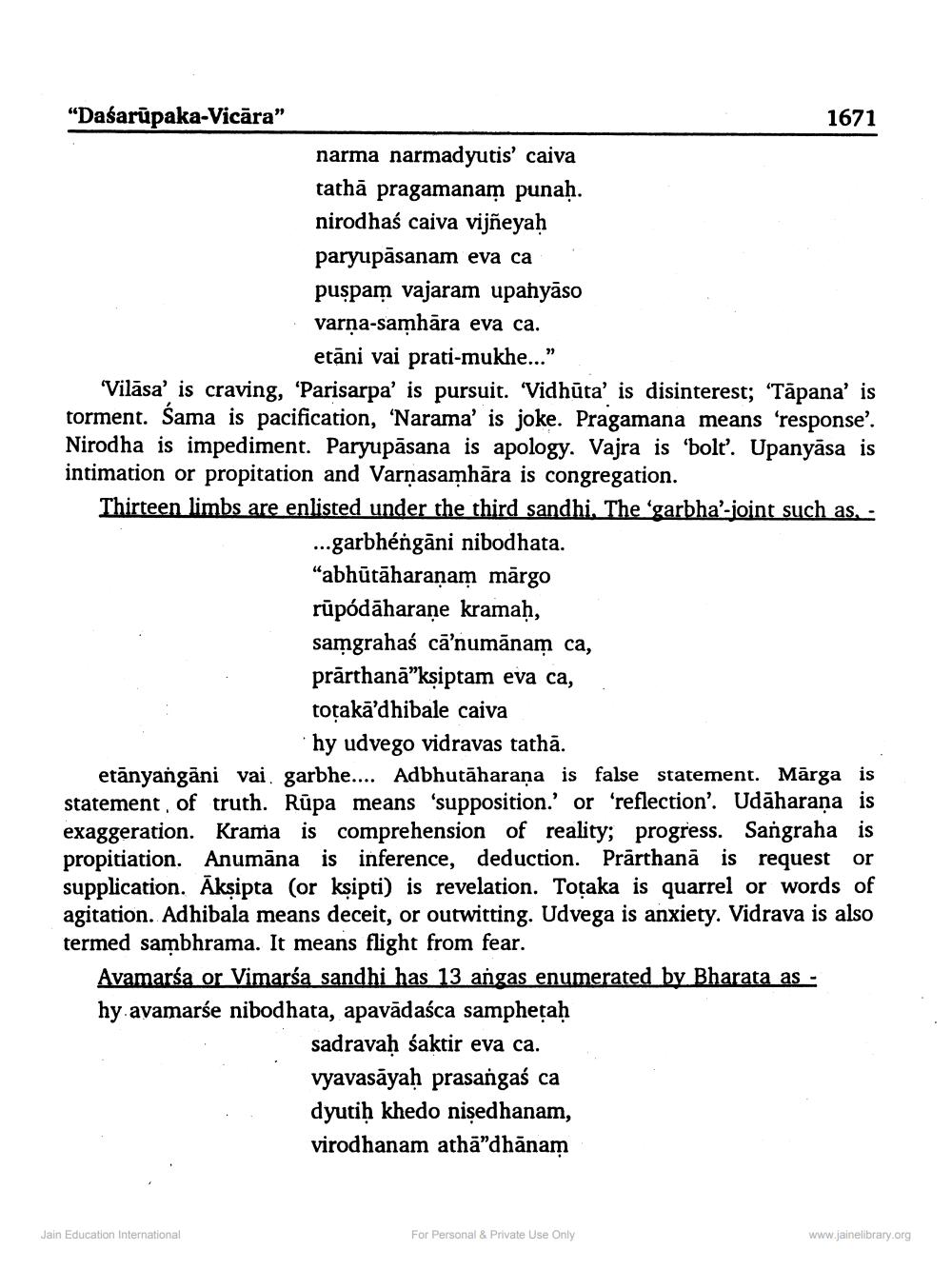________________
"Dasarūpaka-Vicăra"
1671 narma narmadyutis' caiva tathā pragamanam punaḥ. nirodhaś caiva vijñeyah paryupāsanam eva ca puspam vajaram upanyāso varna-samhāra eva ca.
etāni vai prati-mukhe..." 'Vilāsa' is craving, 'Parisarpa' is pursuit. 'Vidhūta' is disinterest; “Tāpana' is
ma is pacification, 'Narama' is joke. Pragamana means 'response'. Nirodha is impediment. Paryupāsana is apology. Vajra is 'bolt'. Upanyāsa is intimation or propitation and Varnasamhāra is congregation. Thirteen limbs are enlisted under the third sandhi. The garbha'-joint such as.
...garbhéngāni nibodhata. "abhūtāharanam mārgo rūpódāharaṇe kramaḥ, samgrahaś cā’numānam ca, prarthana”ksiptam eva ca, toțakā’dhibale caiva
hy udvego vidravas tathā. etānyangāni vai garbhe.... Adbhutāharana is false statement. Mārga is statement, of truth. Rūpa means 'supposition.' or 'reflection'. Udāharana is exaggeration. Krama is comprehension of reality; progress. Sangraha is propitiation. Anumāna is inference, deduction. Prarthana is request or supplication. Aksipta (or ksipti) is revelation. Toțaka is quarrel or words of agitation. Adhibala means deceit, or outwitting. Udvega is anxiety. Vidrava is also termed sambhrama. It means flight from fear.
Avamarśa or Vimarśą sandhi has 13 angas enumerated by Bharata as - hy.avamarse nibodhata, apavādaśca samphetaḥ
sadravaḥ śaktir eva ca. vyavasāyaḥ prasangaś ca dyutiḥ khedo nisedhanam, virodhanam athā”dhānam
Jain Education International
For Personal & Private Use Only
www.jainelibrary.org




